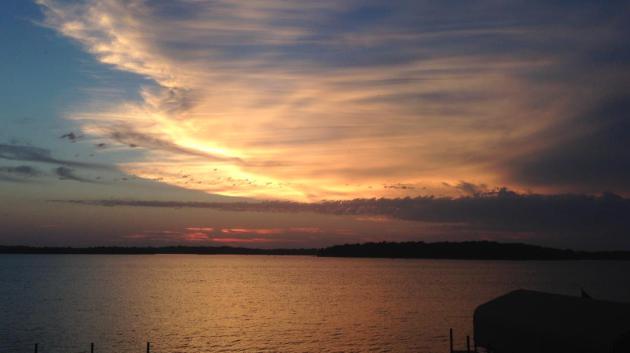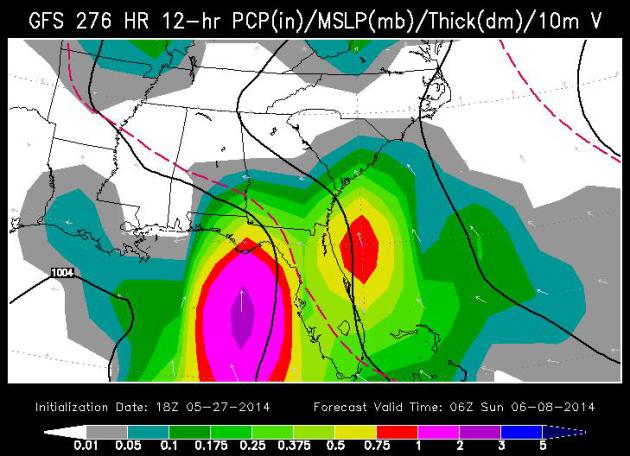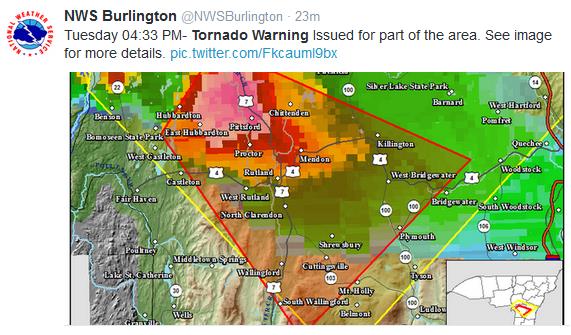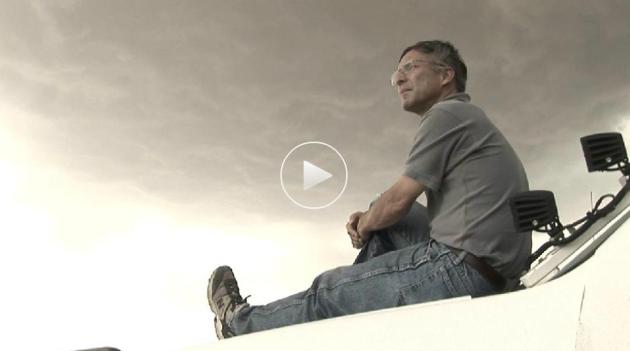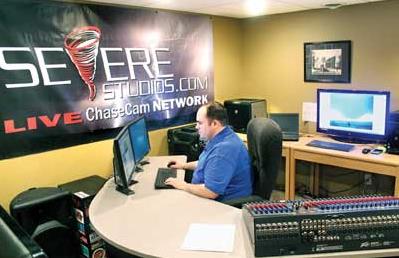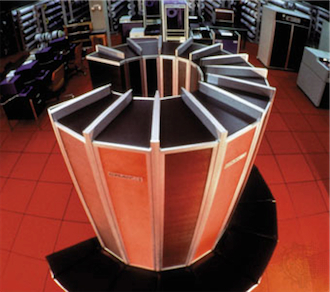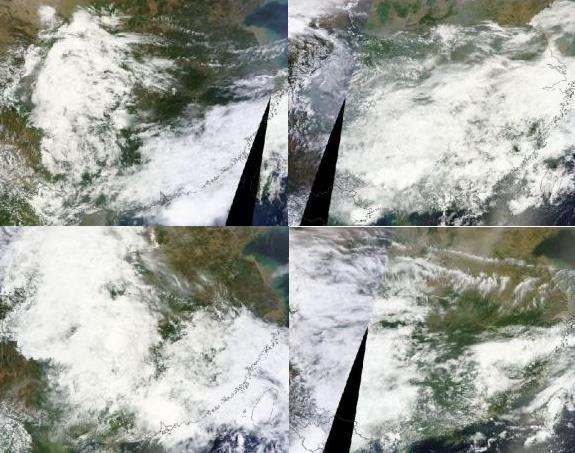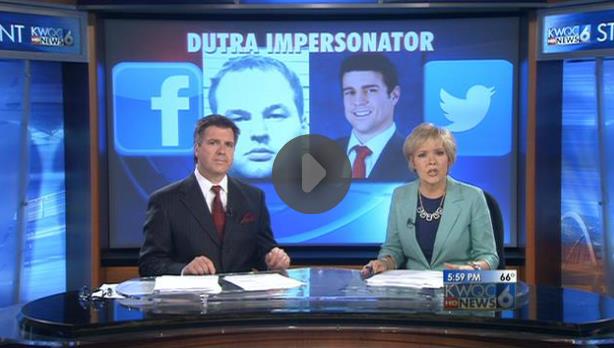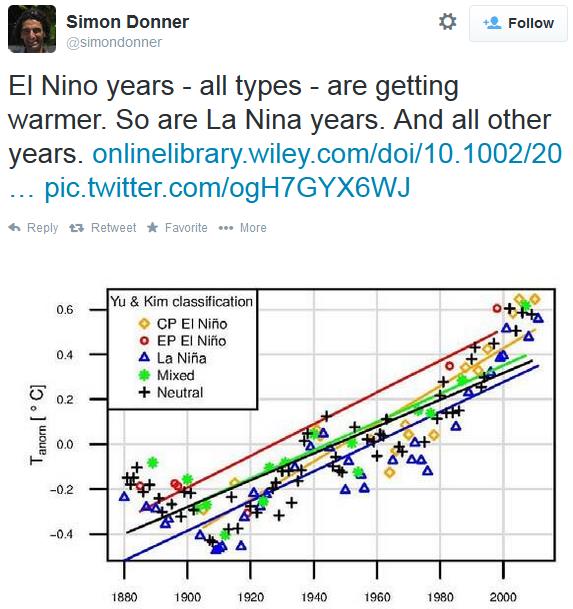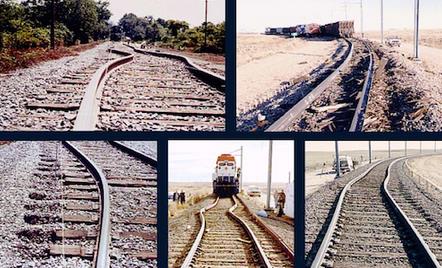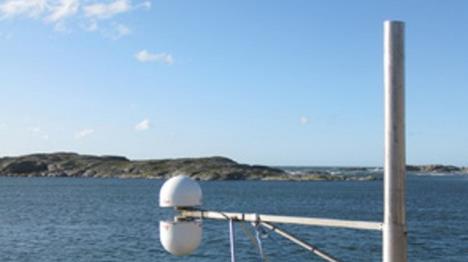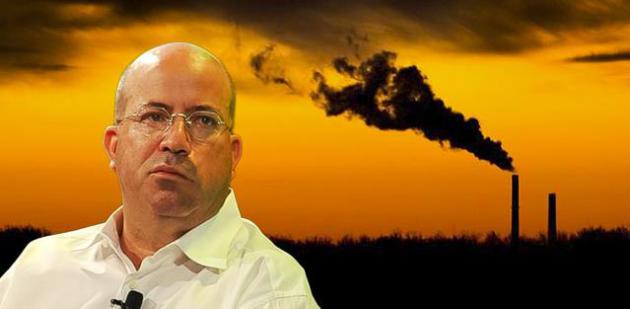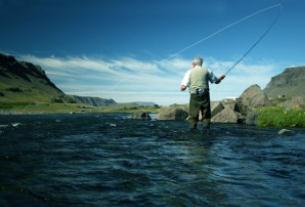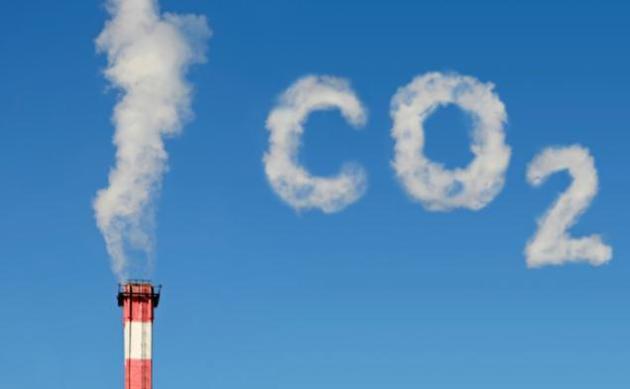An Early July
A
reluctant spring? Just north of Brainerd this weekend one couldn't help
but notice a lime-green blizzard of buds just filling in the trees -
coming about 2-3 weeks later than usual.
Minnesota has endured 6
months in a row of colder than average temperatures. We were long
overdue for a real warm front and it finally arrived, and on a major
holiday at that! Good timing, for once.
Under the heading "Be
Careful What You Wish For" this week will look like something out late
July with a streak of 80s, as an overheated ridge of high pressure
expands northward. 100-degree heat is possible in the Dakotas by
Thursday, and a few 90s may edge into western Minnesota by late week.
Expect
a dry sky today into Saturday morning. An approaching cool front sparks
numerous T-storms late Saturday and Sunday. There are some signs the
front may temporarily stall; I could see flooding rains/T-storms next
Tuesday.
What a difference a year makes. Last year we experienced a rapidly spreading drought.
This
year lake water is higher than I've seen it in a long time. Some docks
are underwater; many farmers can't get out into their soggy fields.
A drought or flood summer? Something in-between, please.
4 PM Thursday.
Heat continues to expand northward across the Plains, highs approaching
90F Friday afternoon as far north as South Dakota and western
Minnesota. Meanwhile New England remains cool, under the influence of a
"backdoor cold front", sizzling 100-degree heat from Las Vegas to
Phoenix. Map: HAMweather.
Gulf Coast Soakers.
NOAA's models (consistently) print out excessive amounts of rain for
much of the Lower Mississippi Valley, as much as 6-8" rain for Louisiana
over the next 7 days. 2-5" rains are possible from Montana, the Dakotas
and Minnesota into portions of the Ohio Valley by Wednesday of next
week.
Risk of "Arthur"?
It's still very early, and our confidence level is low. This may just
be noise, but a couple of consecutive GFS model runs show a possible
tropical depression or tropical storm pushing out of the Gulf of Mexico
into Florida by Saturday, June 7. In fact a series of storms may soak
Florida and much of the Southeast, increasing the potential for flash
flooding between June 5-13. We'll have to keep an eye on this and see if
there is model continuity and agreement on this potential solution. For
now it's just a small risk, but it pays to be perpetually paranoid.
Source: WSI.
Tornado Damages Trailers at North Dakota man camp.
At least 15 trailers associated with fracking in western North Dakota
were severely damaged by a tornado late Monday. Details from
The Washington Post. Fargo's
Inforum.com has video of the actual tornado and more details on injuries, at least one critical.
Advances in Technology, Social Media Changing How Quickly People See Tornado Devastation.
This is the case with all outbreaks of extreme weather. The authors
point our (correctly in my humble opinion) that social media, in
addition to local legacy TV/radio, can provide valuable confirmation
that a storm is actually causing damage - in real time - increasing the
odds that people will do the right thing and seek shelter. Yes, it's
perfectly acceptable to take your laptop, tablet or smartphone down to
the basement. Here's a clip from
tribtown.com: "
Experts
say that advances in technology, particularly social media, are
changing how people watch for severe weather and how quickly images of
the damage can be shared. John Robinson, the warning coordinator for the
National Weather Service's Little Rock office, said Facebook, Twitter
and other social media as well as smart-phone apps are helping people
learn about storm warnings faster..."
Storm Chaser Tim Samaras: One Year After His Death, His Gift is Unmatched.
Here's an excerpt of a terrific story (and video) on Tim's remarkable
tornado research legacy, one year after his tragic death outside
Oklahoma City, courtesy of
National Geographic: "...
Honoring
the legendary Tim Samaras and his partners by continuing the chase has
been the easy part. Filling his shoes is another matter. The TWISTEX
research has "ground to a halt," says cofounder Bruce Lee. "Tim held the
project together, and he was the one who interacted with the
nonacademic money folks." Though the Texas Tech "Stick-Net" field researchers and the team headed by Joshua Wurman
at the Colorado-based Center for Severe Weather Research continue to
deploy devices intended to gather supercell measurements, no one has
come close to matching the comprehensive data Samaras was able to get
from inside the tornadoes themselves. Nor has an inventor of his stature
emerged..."
Storm Chasing From Home.
Full disclosure: Kory Hartman now works with me at Media Logic Group,
but he continues to run Severe Studios, which aggregates and curates
storm chasing videos from around the nation - he's done a remarkable job
growing his business and I'm lucky to have him on my team. Here's a
clip from an article at
The Wright County Journal Press: "
For
a South Dakota radio announcer, storm chasing was a hobby until one day
a tornado being videotaped in western Iowa suddenly veered in the
direction of the storm chasers' vehicle and spun it sideways as the
occupants yelled and screamed in terror. That incident changed
everything. Kory Hartman, who now lives in Monticello, said the hobby
suddenly became a business. He is now the CEO of Severe Studios and
coordinates a network of storm chasers. The western Iowa tornado had
killed four boys at the Little Sioux Scout Ranch, and the news about the
tragedy was reported across the nation. You can still find the New
York Times story on the Internet. Hartman said it was heartbreaking to
go see the Scout Ranch. He remembers a kid's shoe hanging from a tree..." (Image credit: The Drummer).
National Weather Service Kinda, Sorta Explains Its Major Data Outage. Meteorologist Andrew Freedman has the story at
Mashable; here's a clip: "...
The
memo says the data disruption was triggered by an upgrade to the
weather data dissemination system itself, specifically a modification to
a network firewall. The firewall was supposed to continue to allow data
to pass through it, but "within minutes, engineers noticed that data
were not traversing the firewall." The memo claims all warnings did
reach the public despite the loss of the main automated delivery system,
which is a questionable claim considering that many storm chasers,
television meteorologists, online news sites and others in the weather
community reported disruptions in crucial radar data and severe weather
warnings on Thursday..."
Alaska Wildfire Keeps Growing After Evacuations.
248 square miles? This is one big fire, coming unusually early in the
season, coming on the heels of an unusually warm and dry winter and
spring across Alaska. Here's an excerpt from AP and
ABC News: "
Officials
said that possible rain forecast this week in Alaska could help crews
gain control over a massive wind-whipped wildfire that forced dozens of
people to flee to shelters and move some of their animals to safety at
rodeo grounds. The Funny River Fire in the state's Kenai Peninsula
covered nearly 248 square miles as of Monday morning and was 30 percent
contained, according to the Alaska Interagency Interagency Management
Team. No injuries or structure damage has been reported, officials said..."
File photo credit above: "
The
Funny River Fire continues to burn in Kasilof, Alaska on Wednesday, May
21, 2014. Firefighters estimate that more than 20,000 acres have been
burned in the blaze." (AP Photo/Peninsula Clarion, Rashah McChesney).
Watch As The Smoke Plume From Alaska's Raging Funny River Fire Is Pulled Into an Atmospheric Cyclone.
Discover Magazine has the story, imagery and video loop; here's an excerpt: "...
Here’s a great explanation from the “Weather Guys” at the Cooperative Institute for Meteorological Satellite Studies:
A
big fire produces strong upward moving air currents that carry water
vapor and ash upward. The water vapor can condense on the ash forming
cloud drops. The vigorous upward motions produce these pyrocumulus
clouds that look similar to thunderstorm clouds, which also form due to
strong upward moving air.
Imagery credit above: "NASA’s
Aqua satellite captured this view of the smoke plume from the Funny
River Fire as it was pulled into a cyclonic pattern of atmospheric
circulation in the Gulf of Alaska on May 20, 2014." (Source: NASA).
Massive, 2-Week China Floods Sends Half A Million Fleeing. Here are more details on an ongoing and serious flood situation gripping China, courtesy of
robertscribbler: "...
Each
new dawn brings with it fresh losses with numerous major roads closed,
bridges washed out, and adding to what is now an almost endless tally of
evacuation orders. Daily rainfall totals in the range of 2-6 inches or
more have saturated grounds, burst riverbanks, and turned streets into
torrents. By today, more than 1 million people had been impacted with
nearly a half million evacuated or rescued from flooded buildings. Since
the, still ongoing, floods began in mid-May, more than 25,000 homes and
40 souls have been lost to the epic storms..."
Image credit above: "
Relentless
heavy rainfall over Southeast China visible in the above four satellite
images on [left to right, top to bottom] May 12, May 18, May 23rd and
May 27th." Image source:
LANCE-MODIS.)
Solving The Vicious Cycle of Air Conditioning.
All that waste heat from air conditioning on a massive, metro-level
scale can add a couple degrees to the urban heat island. Details from
Yahoo News; here's a clip: "
In
hot, dry Phoenix, air conditioning is for much of the year a necessity
for public health. But with all those machines spewing hot air outside
to provide cool air inside, what happens to the outdoor temperature?
That’s the question researchers set out to answer in a recent study, and
what they found was pretty surprising. Over 10 days, excess heat from
air conditioners running during the night resulted in temps two degrees
higher than they would have been, worsening the urban heat island effect
and adding to cooling demands..." (Image: College Humor).
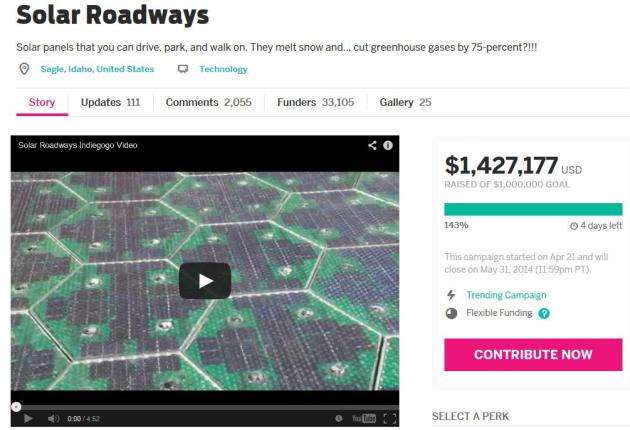
Solar Roadways.
Solar panels that you can drive, park and walk on. They melt snow
and...cut greenhouse gases by 75 percent? The goal was $1 million in
crowd-sourced funding - the inventors are closing in on $1.5 million.
Details at
indiegog.com.
Iowa Man Accused Of Using Local Meteorologist's Name To Get Dates.
Funny, nobody ever tried that with me. I'm relieved...and a little
offended. And who are these women that didn't do their due diligence?
Details and video from
TVSpy: "
Matt Wendt is accused of impersonating KWQC meteorologist Greg Dutra on social media. According to Gawker, “Matt Wendt’s little plan fell apart when the real Greg Dutra tweeted
at his girlfriend on Twitter, and one of Wendt’s prospects started
questioning the real Dutra as to why he never mentioned that he was in a
relationship...”
Don Draper Is Going To Die. Esquire
seems to think so; the author looking at CDC numbers from 1969 (current
year for "Mad Men") to calculate the various ways Don may kick the
bucket. Here's an excerpt: "At least, that's what Mad Men
creator Matt Weiner wants us to think. I'm betting he kicks the bucket
in 1969, but the real question is how. From the opening-credits free-fall
to that time the elevator forgot to bring the elevator, Death's craggy
finger has been pointing at Dick Whitman. Whether this has all been
misdirection or blatant foreshadowing, the Don-doom message couldn't be
more conspicuous (or Kubrickian) if little Bobby crayoned "Redrum" on Daddy's door..."
3-D Fruit Printer Could Crank Out Frankenfruits On Demand. And who wouldn't want to print out their own fruit every morning? I'm salivating over the possibilities. Here's a clip from
gizmag.com: "
By
now we're all quite used to seeing blended fruit juices such as
banana-strawberry or apple-lime, but what about solid three-dimensional
hybrid fruits that are made to order? Well, that's just what Cambridge,
UK-based design company Dovetailed is promising, with its 3D fruit
printer..."
A Successful Live, TV Photobombing Event. In case you missed this, it's worth a look. What was in that vase anyway? Video link and story from
TVSpy; here's an excerpt: "
It turns out there’s no such thing as an anonymous photobomb. The internet has been abuzz with the video of WHTM
reporter Dave Marcheskie doing a live shot from a state
representative’s victory party while a man drank out of a flower vase
behind him. The video was even featured on Jimmy Kimmel Wednesday night..."
Climate Stories...
Climate Change Affects National Defense Decisions, Official Says. From
the Arctic to drought-fueled revolution to rising sea levels and
extreme weather events as a force-multiplier, the military is paying
attention. Here's an excerpt from
The Department of Defense:
"
Climate change is among the factors Defense Department officials
consider in protect national security around the globe, a senior DOD
official told a Senate panel here last week. Daniel Y. Chiu, deputy
assistant secretary of defense for strategy, testified before the Senate
Appropriations Committee’s defense subcommittee May 21. Chiu said while
DOD plans for contingencies and unexpected developments to protect the
nation’s security, climate change can create sea-level rise, storm
surge, shifting climate zones and more severe weather conditions that
can affect operations. And while some of those conditions have affected
military installations, he said, such changes can also have a negative
impact on other DOD concerns..."
El Nino and La Nina Years are Trending Wamer. More details in this research paper at
Wiley Online Library.
Sheldon Whitehouse: Climate Change in a Tsunami of Denial. Here's an excerpt of an Op-Ed from U.S. Senator from Rhode Island, Sheldon Whitehouse, at
The Providence Journal: "...
Most
important, the climate deniers have lost the public. Independents and
Democrats overwhelmingly support action on climate change, and most
Republican voters under 35 in a recent poll said climate deniers are
“ignorant,” “out of touch,” or “crazy.” Republican mayors and governors,
away from the polluter money choking Congress, are getting to work on
climate change. Republican economists support a carbon tax. Republicans
increasingly see they cannot possibly win the 2016 presidential race
with a denier candidate..."
This Is The Best Smackdown of Pat Sajak You'll Read. Ever.
No, I get most of my science from TV game show hosts. Nothing wrong
with that. Here's an excerpt of a quote from Marshall Shepherd, past
president of the AMS, the American Meteorological Society, as relayed to
io9.com: "...
The
lesson here is that you must consume information from credible or
expert sources. Ask yourself if the author of that blog or Op-Ed has a
background in the science, has published in peer-reviewed journals, or
at least put forth their position in a forum that can evaluated, tested,
or scrutinized. Second, the public must understand that just because
you know a TV personality, it doesn't signify that they are an expert on
climate or vaccines. While this may sound trivial, many celebrities
reach millions of people, and I am convinced that some fall lock step
with their viewpoint just because they like them or their show..."
Shoot and a Miss: Wall Street Journal Op-Ed Attacks 97% Climate Consensus. Here's an excerpt of a retort to an error-ridden editorial at the WSJ from
Climate Science Watch: "
A
new opinion piece in the Wall Street Journal attacks the 97% scientific
consensus on man-made global warming while completely missing the point
on what scientists are actually saying about climate change. Joseph
Bast of the Heartland Institute and Roy Spencer can try to obscure the
consensus by nitpicking over details, but it won’t change the facts:
climate change is real, human-caused and dangerous. The following is a
guest post by Climate Nexus: The Heartland Institute’s Joseph Bast and serially corrected Dr. Roy Spencer have a new opinion piece
in the Wall Street Journal attacking the 97% scientific consensus on
man-made global warming. The bulk of their argument amounts to
nitpicking over the meaning of words like “dangerous” and
“catastrophic,” completely missing the point on what scientists are
actually saying about climate change..."
Climate Change Could Warp Rails with "Sun Kinks". Sun Kinks? Sounds like a up and coming reggae band, but it's no laughing matter if you own a railroad.
Climate Central has the story - here's an excerpt: "
In
a warming world, the U.S. could see its cities inundated with water,
its power grids threatened by intense storms, its forests devastated by
wildfire and insect infestations, and its coastlines washed away by
storm surges. Climate change also threatens roads, pipelines, power
lines and rail lines in ways that may not be quite as in-your-face as
the stark images of homes washed away on a hurricane-eroded beach.
Bridges and highways can be weakened or destroyed in floods. Power lines
can be burned in wildfires and damaged in major storms. Roads and
airport runways are vulnerable to extreme heat, which can soften and
deteriorate asphalt..."
Photo credit above: "
Examples of railroad track buckling from a report on the issue from the National Transportation Library." Credit: U.S. DOT
Using GPS To Measure Changes in Sea Level. Gizmag has details on new technology trying to get a more accurate read on the rate of sea level rise; here's an excerpt: "
Measuring
mean sea level is not only an invaluable tool for pilotage, navigation,
aeronautics, cartography, sea charting, and geology, it’s also a
fundamentally important metric for measuring possible evidence of
climate change, and for measuring the direction, extent and rate of such
change. Johan Löfgren and Rüdiger Haas of Chalmers University in Sweden
have developed a new way of measuring sea level that uses satnav
signals for constant, real-time monitoring that promises new insights
into many fields, including climate change..."
Is CNN Blaming Viewers For The Channel's Lack of Climate Coverage? Here's an excerpt from
Media Matters: "
CNN president Jeff Zucker raised some eyebrows this week when, asked
about the news channel's increasingly slim coverage of climate change,
he commented the network hasn't "figured out how to engage the audience
in that story in a meaningful way." He added: "When we do do those
stories, there does tend to be a tremendous amount of lack of interest
on the audience's part." Zucker acknowledged that climate change
"deserves more attention," but suggested that the issue isn't receiving
that attention on his network because CNN needs the topic to generate
ratings, or "interest," in order to receive more airtime..."
Climate Change Helping Hybridization Between Native, Invasive Trout Species: USGS Study. Implications for Minnesota's lakes? Here's an excerpt from
Nature World News: "
Researchers
at the USGS along with colleagues at the University of Montana and
Montana Fish, Wildlife & Parks found that change in temperature has
accelerated hybridization between native westslope cutthroat trout and
introduced rainbow trout. Experts have predicted that warmer
temperatures will help invasive fish grow and form hybrids with native
fish. The study is published in the journal Nature Climate Change..."
Hoping for a Rational Climate Change Discussion. Here's a line of reasoning that made perfectly good sense to me, in a story at
Energy Trends Insider. Here is a clip: "...
My
position is that I hope those on the side of “little impact” are
correct, but we need to plan and prepare to the greatest extent possible
for the possibility that they are not. One of the things I do
professionally is risk assessment and mitigation. In fact, we all do it
to some extent. For example, we may believe that the probability that
our homes will burn down is low, but the consequences are so severe in
the event that it happens that we pay for homeowner’s insurance. So for
low risk but high consequence events, we have insurance. Even if you
don’t believe future climate model projections, would you concede that
there is a chance you are wrong? Do you think there is a 1 percent
chance you are wrong? Do we have planetary insurance in the event you
are wrong?..."
"A Climate Crisis Is Also A Health Crisis". Here's a snippet of an Op-Ed that caught my eye in
The New York Times: "...
Millions
of Californians now rely on groundwater contaminated by agricultural
runoff and industrial chemicals. Drought-related dust and wildfires
intensify asthma, respiratory diseases and Valley Fever. Less
agricultural production means poorer nutrition, fewer jobs and higher
food prices for the entire country. A climate crisis is also a health
crisis, and we must first direct solutions and resources to our most
vulnerable and already affected communities..."
GOP In Grip of Climate Change Denial.
No kidding, in fact some wear it as a badge of honor. Let's ignore the
science, data and facts, and make up our own competing narrative, one
that won't bite the hand that feeds. Here's a clip from an Op-Ed at
Rutland Herald Online: "...
Now
just why is it that nearly every Republican presidential wannabe has
decided that climate change is not real? It is very hard not to conclude
it’s all about the money. Since the Supreme Court opened the floodgates
to virtually unlimited campaign contributions, often secretly donated,
significantly more than a billion dollars will be needed to get elected
president in 2016. And Republican candidates expect to receive much of
their money from the oil, gas and coal industries — who by curious
coincidence, just don’t happen to recognize climate change either..." (Image above: NASA).
University of Miami Geologist in Trenches of Climate Change. The
implications of rising seas are especially bleak for southern Florida,
where denial is rapidly giving way to action. Here's an excerpt from a
story at
The Miami Herald: "...
But
Wanless contends that softening predictions is irresponsible. In
typical fashion, his warning comes in stark terms. “The truth is out
now. Our tenure on low-lying parts of South Florida is coming to an end.
You buy down here at your own peril,” he said. “If communities and
governments aren’t fairly warning people, they are at massive risks for
lawsuits because the reality is here.”
*
graphic above: Florida Center for Environmental Studies. Featured in an article at
WLRN, "Why Handwringing about Sea Level Rise Won't Save Miami."
Greenland Ice May Melt Even Faster.
Watch for more "unknown unknowns", otherwise known as tipping points.
Satellite and radar data is discovering what's really going on beneath
Greenland's rapidly melting ice sheet. Here's a clip from a story at
Climate News Network and
truthdig.com: "
Just
days after US researchers identified geophysical reasons why West
Antarctica’s glaciers are increasingly vulnerable to global warming, a
partner team has pinpointed a related cause for alarm in Greenland. Many
of the bedrock crevices and canyons down which the island’s glaciers
flow have basements that are below sea level. This means that as warm
Atlantic waters hit the glacier fronts, the glaciers themselves become
more vulnerable to global warming and increasingly likely to melt at a
faster rate..."
Photo credit above: "
Melting away: an aerial view of the margin of Greenland’s threatened ice sheet." Photo by Hannes Grobe/Alfred Wegener Institute via Wikimedia Commons.
